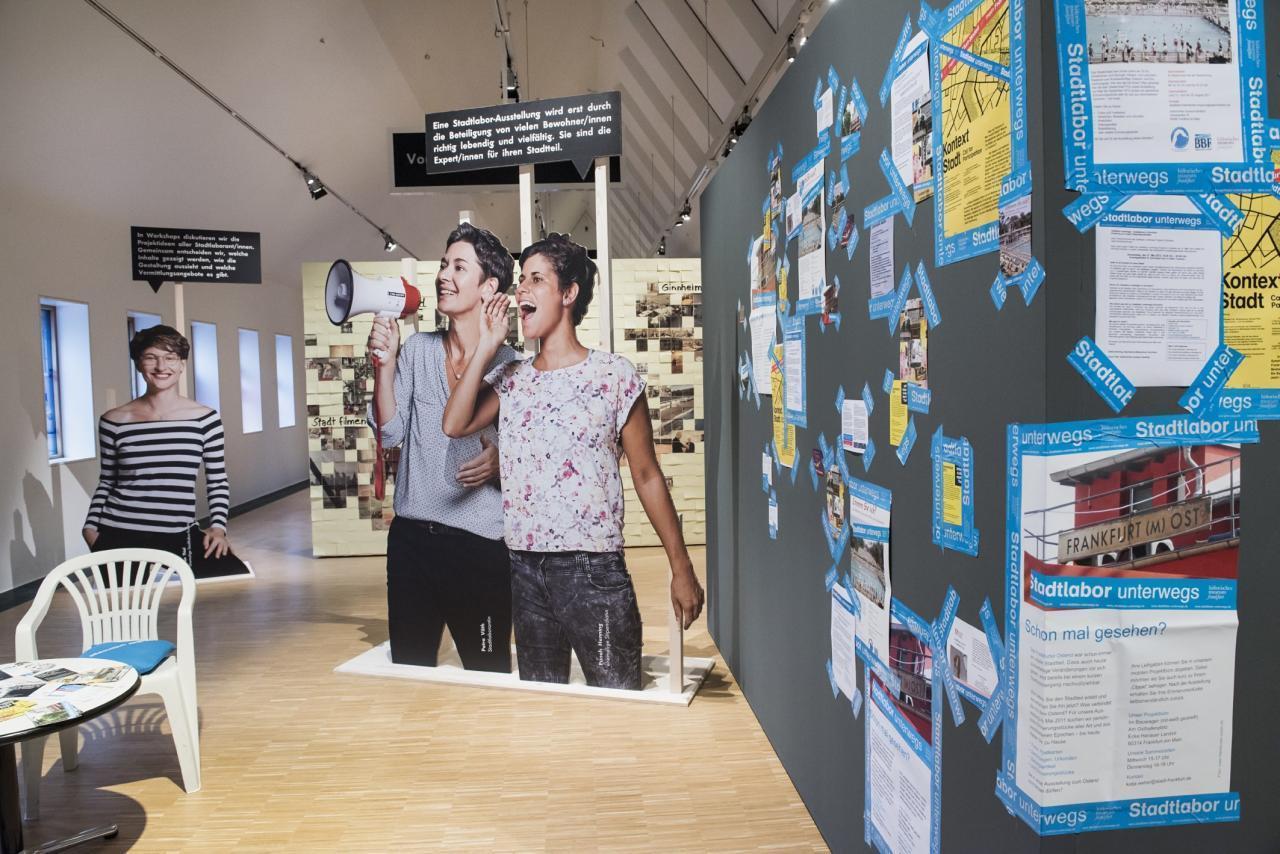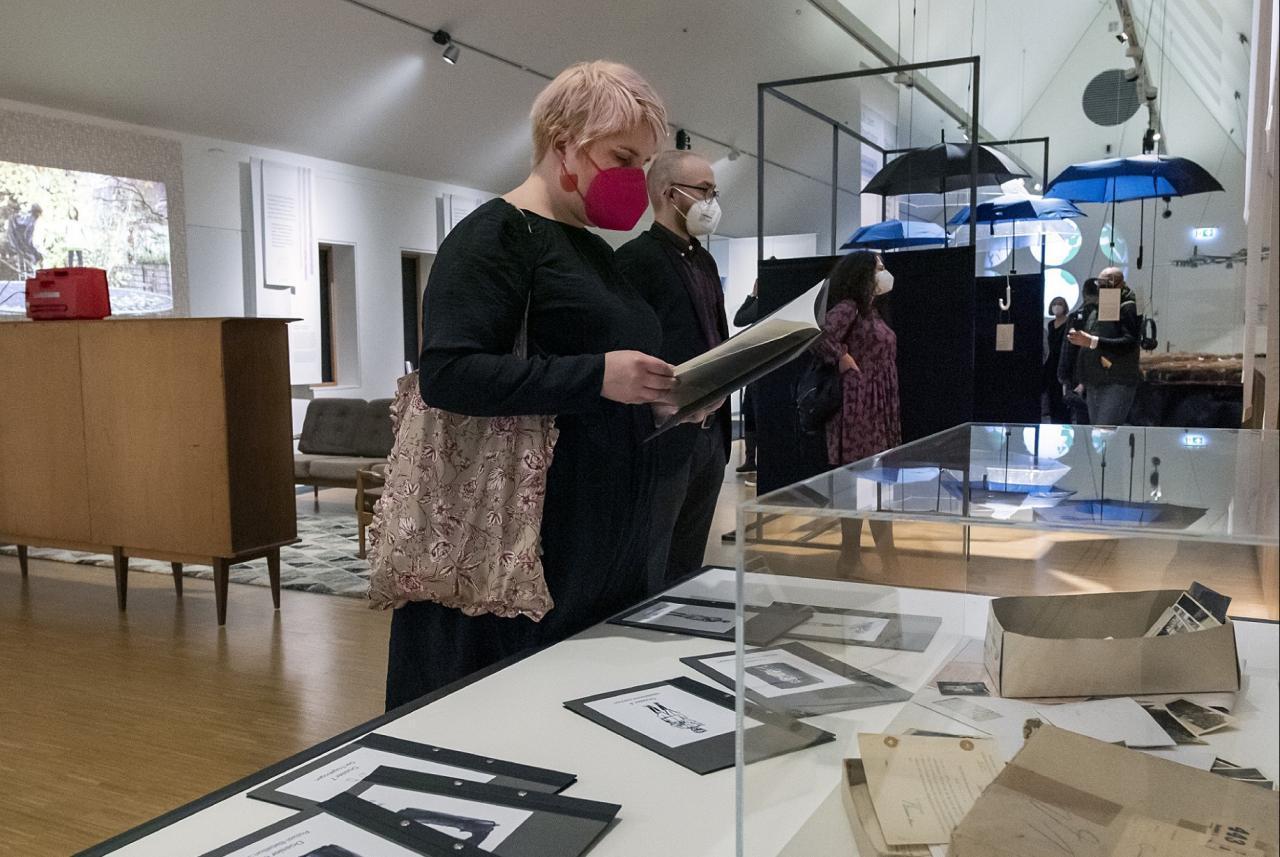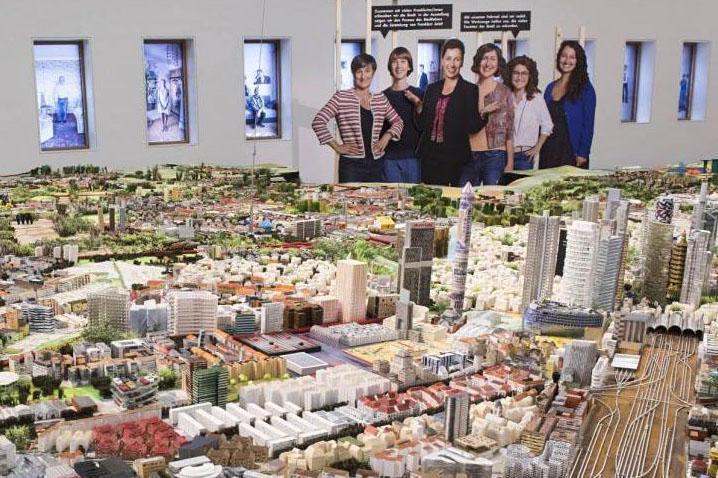
CityLab
City Lab on the move
To find out what life is like in Frankfurt, we will be leaving the museum’s walls and will be on the move with the City Lab for some on-site research. We want to know how the city is subjectively perceived and experienced. And the best people to answer this are Frankfurters themselves, of course. Using different methods in participative city research, the City Lab is always on the move and invites you to join new exhibition and event formats regularly.The City Lab has been up and running since 2010. Since then, we have used it to create five large exhibitions together with many different Frankfurters. We have been in Ostend and at the Stadionbad, and have researched Ginnheim, the Wallanlagen and the Gallus. In 2015 we went on a summer tour, and summer 2016 saw the City Lab touring with artistic interventions, workshops, city walks, readings and the question “Who lives in Frankfurt and how do they live?”. In 2017 we produced a City Lab film for the first time and, in 2018 the City Lab toured the Ernst-May settlements. This was in preparation for 2019, the 100th anniversary of the Bauhaus.
Here you will find an overview of all previous City Lab projects.
City Lab at the Museum
With the new exhibition room “Frankfurt Now!”, we have gained around 600 m2 more space for the various activities of the City Lab. After many years of showing our exhibitions around the city and in places rather atypical for a museum, such as an open-air pool, the adjoining rooms to a gymnasium, a car dealership or an empty office space, “Frankfurt Now!” is an exhibition and event location at the museum. The City Lab having a new, fixed location is a new chapter in the Museum’s history as this now allows us to experiment with new formats. This was the idea behind the first “Collection check” in 2017/18, in which we recontextualised and enhanced parts of the museum collection using participative methods. The pilot project was called “Collection check: A participative collection on migration”. With the “Difficult Things” City Lab, once again, it was objects instead of places that were the focus of the concept. The “difficult things” were objects presumed to be goods stolen in the National Socialist period, the history of which was researched in the City Lab.
In the permanently installed City Lab, things can be stored and examined better than out in the field – in other words, different research and experiments can be carried out. We will continue to adapt our questions, methods and projects on an ongoing basis in order to expand them and adjust them to new situations.



